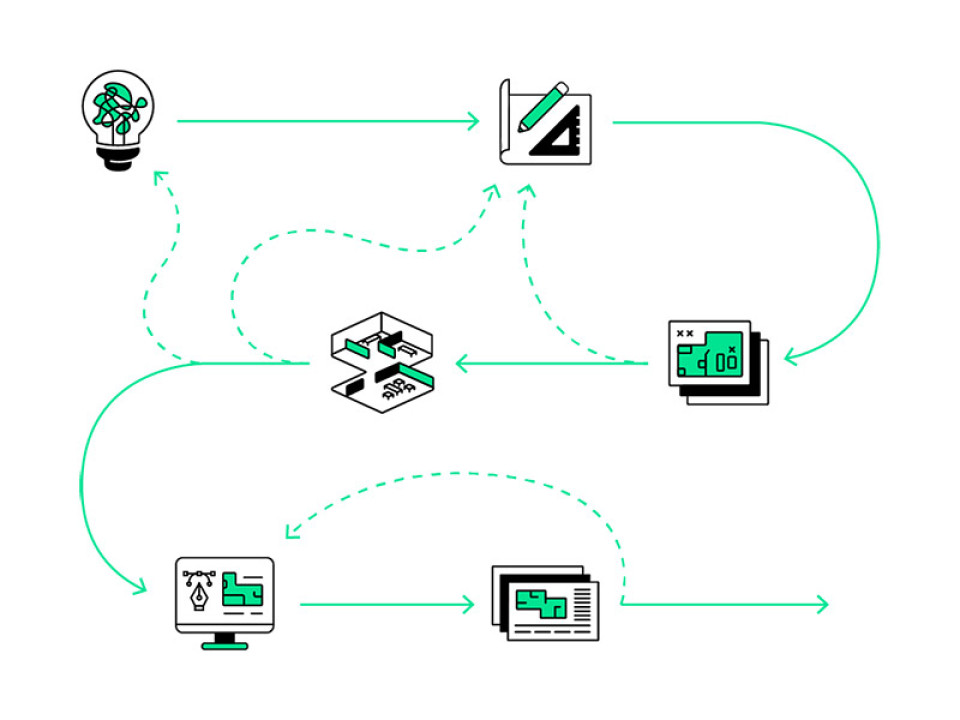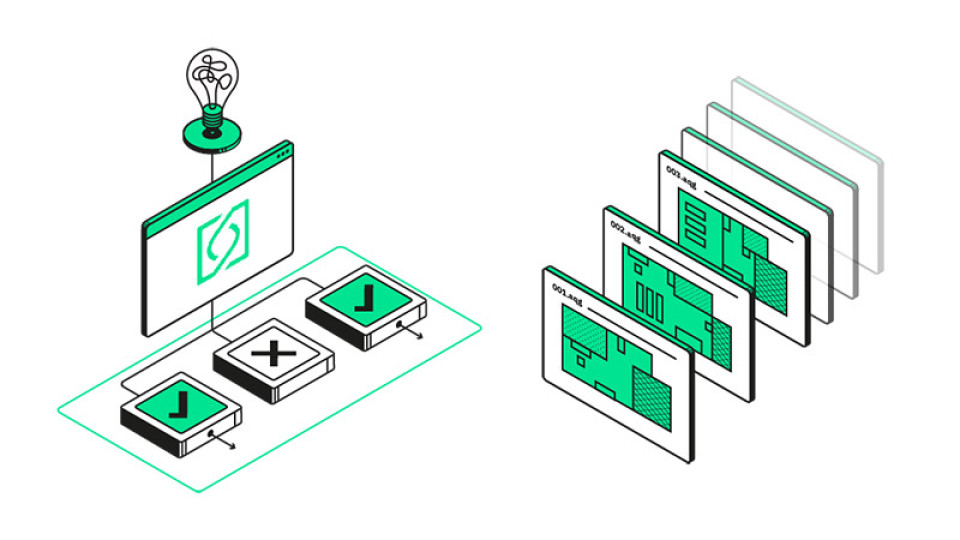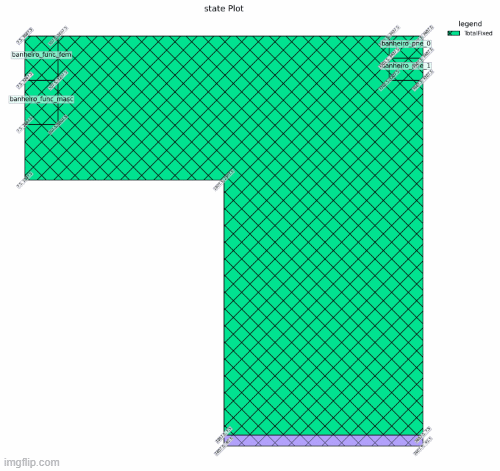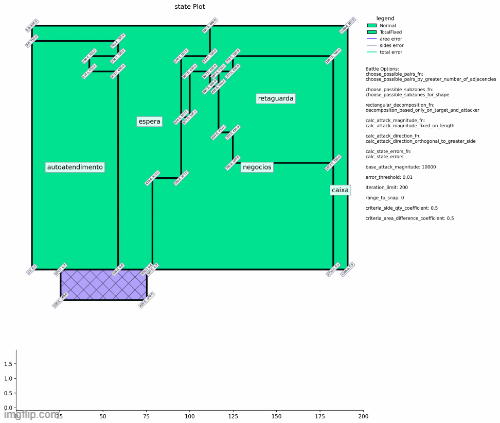Augmenting Design: Space Layout Generation With AI
Thomas Takeuchi, an architect and the founder of Arqgen, was interviewed by Gözdenur Demir, about the use of AI in architectural design. Takeuchi discussed his enthusiasm for and practical knowledge of AI-based methods in architectural design. He also spoke about the founding of the startup company Arqgen, its activities, and current projects.
Arqgen is a Brazilian startup specializing in Generative Artificial Intelligence (GAI)-based architectural design generation for interior layouts and building massing studies. The team leverages their extensive knowledge and experience to setup their software according to their clients' specific requirements, architectural manuals, and rules. This approach ensures efficient, high-quality, and scalable solutions, surpassing the limitations of traditional architectural services.
Gözdenur Demir: Could you briefly describe your background and experiences? When have you started interested in the development of AI-powered/AI-based approaches for the architectural design process?
Thomas Takeuchi: I attained my Bachelor's degree in Architecture and Urbanism from Mackenzie University, São Paulo, Brazil, 2013. From the early stages of my academic journey, I found myself profoundly captivated by the prospect of elucidating and formulating the architectural process. Perhaps due to this fixation, I naturally gravitated towards the realm of parametric design, predominantly using Grasshopper, and endeavored to implement it whenever feasible.
It took me a considerable amount of time, accompanied by numerous setbacks, before I came to the realization that formulating a parametric formula and utilizing it as an architectural process was nearly unattainable1. Nevertheless, I persevered in my pursuit of this initial aspiration. Eventually, in 2014, I was introduced to genetic algorithms, a concept that can be broadly classified under the domain of artificial intelligence. This marked a pivotal moment in my professional trajectory. Subsequently, it became evident to me that adopting a more flexible approach, in stark contrast to the rigid nature of parametric design, was the key to automating the architectural process—delegating design tasks to the machine.

GD: What is similar or different in an AI based design process from the parametric design process? Or else, are these two approaches already collaborating?
TT: While parametric design may be regarded as a “hard” approach to the architectural process, AI based design, conversely, can be viewed as a more “soft” approach. In the parametric design process, a complex equation yields a single "correct" answer for a specific set of inputs (parameters). Conversely, AI based design has the capacity to produce a multitude of potential outputs for a given set of inputs. It is worth emphasizing that AI-based methods yield probabilistic results, rather than absolute ones, drawing an analogy to the realm of quantum physics.

GD: Could you explain your current projects and applications with AI?
TT: Since the year 2020, I have co-founded a startup named Arqgen. Our distinctive value proposition revolves around leveraging the potential of generative artificial intelligence to swiftly and precisely tackle architectural projects, particularly in terms of layout. Through our ongoing software development efforts, we aim to empower the system to comprehend a diverse range of architectural constraints, criteria, and evaluation metrics, enabling it to master the ability of designing architectural projects within the specific domains it has been trained.

Presently, we find ourselves delivering our solution to one of Brazil's prominent financial institutions, wherein our primary objective involves automating the design process for all their branches. Additionally, we have engaged with several construction companies, extending our solution to assist them in automating their feasibility projects.
You may be curious as to how our AI can effectively solve architectural projects of varying scales. The remarkable aspect of our software lies in data structure, designed to be abstract. Essentially, the AI only needs to position zones and objects in a given space, with scale exerting no fundamental influence - it doesnt matter if it has to position a furniture within a zone or siting an entire building within a specific site.
GD: Do the applications you develop and your research focused mainly on Space Layout Planning (SLP)? What is the main challenge about working with it?
TT: Yes, the applications that we are developing at Arqgen are primarily focused on SLP. However, we go beyond the zoning phase by also incorporating the positioning of objects such as furniture within the space. Please take my perspective with a grain of salt, but in my opinion, SLP represents the domain where formulating the architectural process makes the most sense. It allows for the establishment of distinct architectural constraints and criteria, minimizing subjectivity as much as possible throughout the process.
However, SLP remains a complex problem to solve. From my perspective, the primary challenge lies in effectively establishing zone adjacencies and determining the essential areas required to accommodate all objects while respecting all constraints and criteria. Additionally, it is crucial to navigate this process without compromising the overall control of the Big O Notation, ensuring that the computational complexity remains manageable rather than exponentially increasing. Striking a balance between these factors is key to successfully addressing SLP challenges.

GD: What does it mean to use AI in the design process?
TT: The complexity of this question can be expanded to great lengths, but for the sake of simplicity, I hold the belief that if, at any stage of the design process, a machine is responsible for making decisions - whether it involves classifying elements within a street view, generating conceptual images for an architectural project, or producing a space layout - one could contemplate incorporating AI in the design process.

GD: Which AI methods/techniques are you using?
TT: SLP presents a complex problem that we couldnt solve by using a single AI method, despite our strong desire to do so. Currently, our primary focus revolves around utilizing Deep Reinforcement Learning (DRL), simple linear regression, and evolutionary algorithms to address the challenges inherent in SLP.
GD: Which design phase can your method apply in? Can this method be applied in other phases of the design process too?
TT: At present, our solution extends to the of schematic and conceptual design phases, where the creative resolution of SLP is crucial. When delving into the intricacies of construction documentation phase, the utilization of AI may not be necessary. Instead, it is very likely that parametric approaches would be more apt and applicable during this phase.
GD: Which aspects and criteria can we control in design by using this method? For example, can we control the building boundary, environmental data, sizes of the rooms, etc.?
TT: Within our current application, you possess the ability to govern the site or building boundaries within which the SLP is generated. You can also exert control over urban constraints, establish a relationship graph among zones, and define various quality criteria, including accessibility, proximity, coherence of areas between zones, and visibility.
Taking a moonshot perspective, our ultimate vision entails amassing an extensive range of architectural constraints and criteria, such as environmental data, and granting users (architects) the freedom to amalgamate them as they desire. This empowers architects to fashion their distinct AI model, embodying their unique perspectives and interpretations of what constitutes exceptional architecture.
GD: Is your approach specific to any building function? Would it be possible to use this approach in other architectural programs? What is its adaptability?
TT: By formulating the problem domain in a highly abstract manner, we have ensured that our AI possesses the adaptability to cater to diverse architectural programs. The only limitation is when facing a new architectural domain, one that our AI has never encountered, it is necessary to create and implement new constraints and criteria that encapsulate this domain.
As we progressively encounter an array of architectural domains, our AI's repertoire expands, rendering it increasingly comprehensive and well-rounded.
GD: Can we export a 3D model of the design after we use Arqgen?
TT: Currently, our application interfaces with Autocad, Rhinoceros, and Revit. For those employing BIM models within the Revit environment, our application is capable of exporting 3D models complete with materials, along with the ability to position elevation and section views. The integration of our application with additional software platforms will be contingent upon market demand.
GD: Will your method/application turn into a tool?
TT: Our application is currently exclusively utilized by corporate clients. However, our aspiration is to expand its accessibility over time. By developing a comprehensive array of architectural constraints and criteria that can be combined by the user, our ultimate goal is to offer this solution to architects seeking to enhance their workflow. It would be akin to having a co-pilot aiding them throughout the design process, simplifying and augmenting their work.
GD: What kind of data are you using? What kind of methods do you use to acquire data? Do you also produce data synthetically?
TT: Our approach does not rely on the utilization of data in the traditional sense, as seen in deep learning methodologies. The primary rationale behind this lies in the absence of a substantial dataset encompassing a wide range of architectural projects (layouts). Even if such a dataset were available, the likelihood of it encompassing the diverse architectural domains and nationalities found in real-world scenarios is exceedingly slim, unlike the comprehensive coverage observed in Language Model Models (LLM).
Consequently, one could assert that our data is synthetically generated through the employment of a Deep Reinforcement Learning (DRL) approach, allowing us to navigate the limitations of data availability in the architectural realm.
GD: What is the biggest challenge of using AI in the architectural domain?
TT: Primarily, the scarcity of a substantial dataset containing architectural layouts significantly restricts the range of methods and techniques at our disposal. Furthermore, all AI methodologies are plagued by the predicament of "hallucination," for which a universally applicable solution has yet to be devised. While generating texts and images, such as those produced by ChatGPT and Midjourney, this issue is relatively manageable, despite the presence of the uncanny valley phenomenon, within the architectural domain, the luxury of creating implausible scenarios or inaccuracies in dimensions is none. Consequently, if one intends to leverage AI in the architectural domain, meticulous evaluation of the generated solutions is imperative—an arduous task that presents a formidable challenge to overcome.
GD: Are you working with an architect-dominant or a developer-dominant team? How do the architects contribute to the team in this AI-driven process?
TT: At Arqgen, our current team consists of 17 individuals, including myself and my partner, who are both architects. Within our team, we have a total of 6 architects, with the remaining members comprising developers and designers. It is worth noting that our architects at Arqgen possess a dual role as developers; in fact, they are presently closer to be developers than traditional architects.
From my perspective, I believe it is crucial to have a significantly larger number of architects within our team, ideally maintaining a balanced ratio closer to 50/50. This stems from the understanding that comprehending the intricacies of architecture and skillfully translating them into code is an invaluable asset, which cannot be fully accomplished by a pure developer without an architectural background.
GD: As a professional in the field, how should architects position themselves amidst the emerging potentials of generative AI?
TT: I firmly believe that exceptional, unique projects of high quality will always retain their significance. In fact, with the advent of Generative Artificial Intelligence (GAI), such projects are likely to garner even more prestige.
Conversely, in sectors where the demand for mass-produced architectural projects, like retail, is paramount, Generative Artificial Intelligence (GAI), has the potential to disrupt the industry. In such a context, I hold the view that an architect's prowess lies not merely in their proficiency with software tools like Autocad, but rather in their deep comprehension of the architectural process. It should become increasingly crucial for architects to exhibit creativity in skillfully combining constraints and criteria to fine-tune AI models. This ability to guide and refine the AI's output is far more valuable than mere speed in drafting or familiarity with software applications.
GD: What do you think of the latest generative applications and models like ChatGPT, Midjourney and Dall-E? How can these apps contribute to the architectural design process?
TT: The profound capabilities of generative applications never cease to captivate me, evoking both fascination and uneasiness. The potential applications seem boundless, and when it comes to the architectural design process, I have witnessed my colleagues employing them in many innovative ways. These range from utilizing them as inspirational mood boards and producing hyper realistic images from only draft renders to dimensioning structural elements and acquiring urban legislative information.
However, I firmly believe that these current applications merely scratch the surface, as the technology is still in its nascent stages. I am confident that in the forthcoming years, we will witness unprecedented and unimaginable applications that will once again reshape the industry, propelling it into new frontiers.
GD: How should the architects proceed in the AI domain? What kind of processes would you recommend them to be more active in the AI-driven processes?
TT: Adopting AI-based applications should follow a similar approach to embracing any other technological advancement. It entails nurturing a sense of curiosity and a willingness to experiment, seeking solutions to one's specific challenges. I vividly recall my initial foray into learning and utilizing visual programming, which dramatically altered my perspective and approach to architecture. I anticipate a comparable transformation with the integration of AI-based applications. By embracing this technology with an open mind, we have the opportunity to reshape our architectural practices and embark on a journey of discovery and innovation.
GD: Would you have any specific recommendations for those who study architecture?
TT: First and foremost, I would like to offer a recommendation that I extend to students across all fields: learn how to code. Even a basic understanding of visual programming through tools like Grasshopper or Dynamo can profoundly transform your architectural perspective and augment your creative abilities. Embracing coding will empower you to explore new possibilities and broaden your horizons.
Additionally, in this era of AI, I firmly believe that one of the most vital skills to cultivate is critical thinking. The ability to analyze and evaluate information critically, coupled with the aptitude to pose the right questions, will be essential. Rather than merely accepting AI-generated outcomes at face value, it is essential to approach them with a discerning eye, ensuring that they align with your design intentions and meet the project's requirements. By honing your critical thinking skills, you can effectively harness the potential of AI while maintaining a thoughtful and proactive stance in the design process.
GD: Thank you!
Note:
1 An architectural problem revolves around the unary and binary relationships between spaces and objects, where each interaction between these entities resets the initial model state, necessitating reevaluation. This dynamic and recursive nature poses a significant challenge for parametric approaches, which typically follow a unidirectional pipeline and struggle to accommodate such complexities.
Related Content:
-
Artificial Intelligence and Humans: New Perspectives in the World of Design
Humanity has experienced similar fears with each new technology. Just as with the industrial revolution, the internet, and automation processes, artificial intelligence initially creates uncertainty and concern.
-

"UNFOLD" Organized by ATÖLYE and XXI Begins
-
Design Education in the Age of Artificial Intelligence
Bilge Bal and Bahar Avanoğlu talked with Mario Carpo on the first year design studios as the foundation of architectural education and the role of computational design tools in the field.
-

Archive Dreaming
 16.06.2023
16.06.2023









